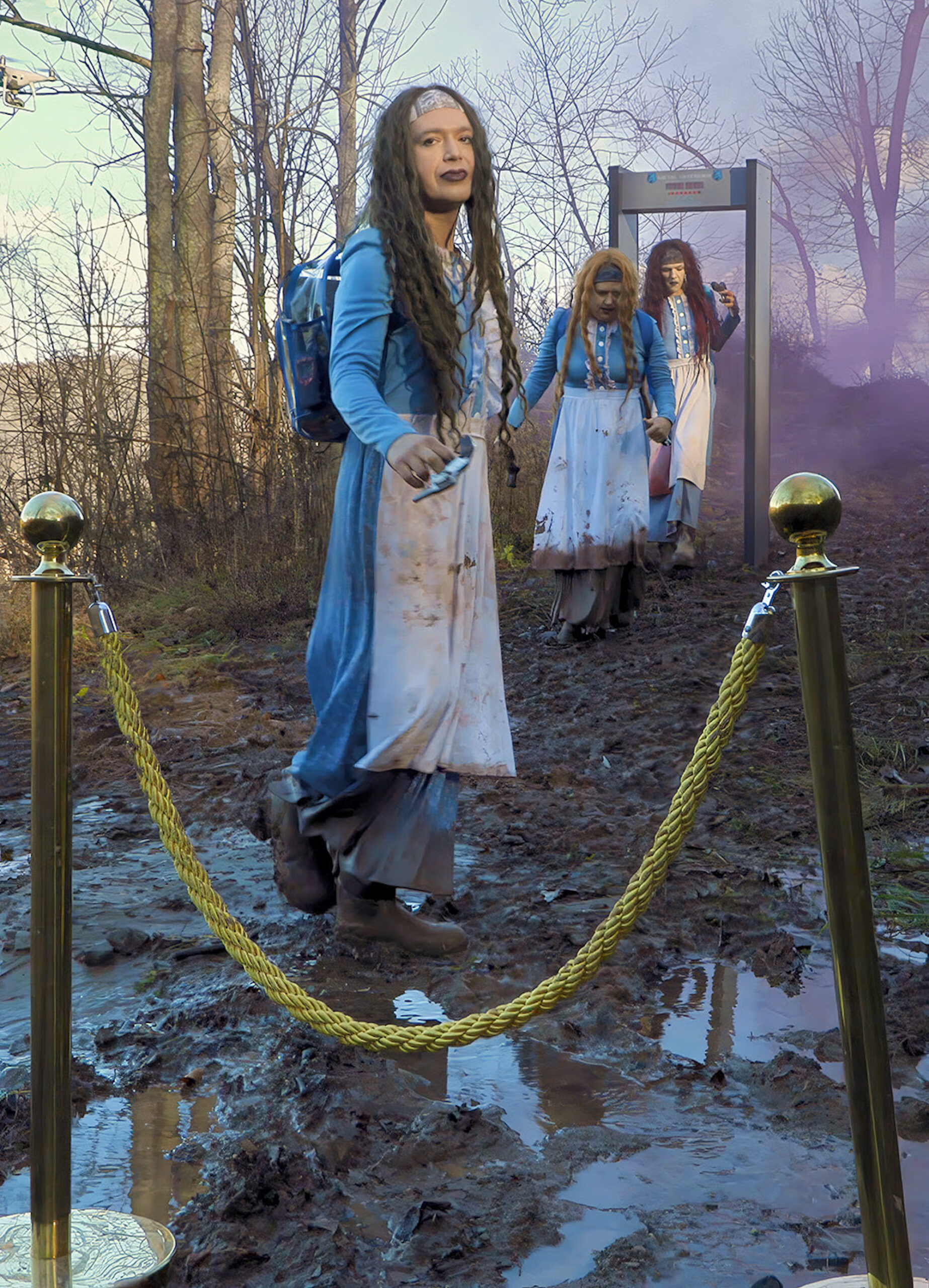Back images
2015 - Photography (Photography)
Sarah Lai Cheuk Wah
Back images is a series of six photographs by Sarah Lei Cheuk Wah that explore the semiotics of power and their intersection with representations of masculinity. The photographs feature what seem to be stock images of several policemen—their rugged uniforms, vehicles and weapons drenching the photographs with signs of masculinity and power as the policemen carry on with their usual tasks. The series was part of a larger exhibition entitled In Stasis where Lei transformed the booth of an art fair into what appeared to be a security area inside an airport. Inside the booth, two live security guards occupy the space, sitting, moving around and taking turns to sporadically rearrange a couple of retractable belt stanchions. In addition to the photographs and the guards, Lei included a video of a security uniform shoe being polished as well as a painting of the shoe and black shoe polish. When seen together the works are playful depictions of ubiquitous forms of power, surveillance and control, which take on an additional meaning in a post 9/11 context.
Sarah Lai Cheuk Wah is best known for her paintings of common objects and urban landscapes, which she renders realistically in great detail. Her visual language is derived from the ordinary, the mundane and the everyday. Whether a lamp, a slice of butter, a street roundabout, the sea or the moon, Lai captures and subtly modifies what she describes as “the things that go unnoticed.” Her paintings are characterized by soft, delicate shades of pale tones that give the images a hazy, dream-like quality—as if the fading colors had been bleached by the sun or the passing of time. Although Lai was originally trained as a painter, her work reaches beyond the space of a frame, often incorporating found objects, sculptural elements and videos alongside the paintings and playfully placing all the disparate but related elements. In terms of her process, she describes the action of painting as meditative, as a state of mind that allows her reflection, introspection and enables her to build a relationship with the world.
Colors:
Related works sharing similar palette
» see more

© » SLASH PARIS
Natalia Jaime-Cortez — Hier j’ai vu une baleine dans la Seine — Espace d’art contemporain Camille Lambert — Exposition — Slash Paris Connexion Newsletter Twitter Facebook Natalia Jaime-Cortez — Hier j’ai vu une baleine dans la Seine — Espace d’art contemporain Camille Lambert — Exposition — Slash Paris Français English Accueil Événements Artistes Lieux Magazine Vidéos Retour Précédent Suivant Natalia Jaime-Cortez — Hier j’ai vu une baleine dans la Seine Exposition Dessin, installations, techniques mixtes Hier j’ai vu une baleine dans la Seine 2023 Natalia Jaime-Cortez Natalia Jaime-Cortez Hier j’ai vu une baleine dans la Seine Encore environ 2 mois : 3 février → 30 mars 2024 Le travail de Natalia Jaime-Cortez se déploie, ou plutôt se déplie, et relève d’un engagement corporel de l’artiste dont les papiers suspendus viennent dessiner des lignes dans l’espace...
Related works found in the same semantic group
» see more

© » KADIST
Bani Abidi
2008The threshold in contemporary Pakistan between the security of private life and the increasingly violent and unpredictable public sphere is represented in Abidi’s 2009 series Karachi ...

© » KADIST
Benvenuto Chavajay Gonzalez
2013Jardín (2013) refers to environmental destruction, specifically the preponderance of disposable plastics, as well as Medellín’s long history of dangerous conflict; it was once considered the most violent city in the world because of the drug trafficking there...

© » KADIST
Yao Qingmei
2017Satirizing an airport security checkpoint, The Ecdysiast – Molt (Body Inspection) by Yao Qingmei offers a comedic and critical inquiry into the logics underpinning collective control and surveillance culture...

© » KADIST
John Houck
2013Baby Shoes, Never Worn is part of photographer John Houck’s series of restrained still-life photographs capturing objects from his childhood...



